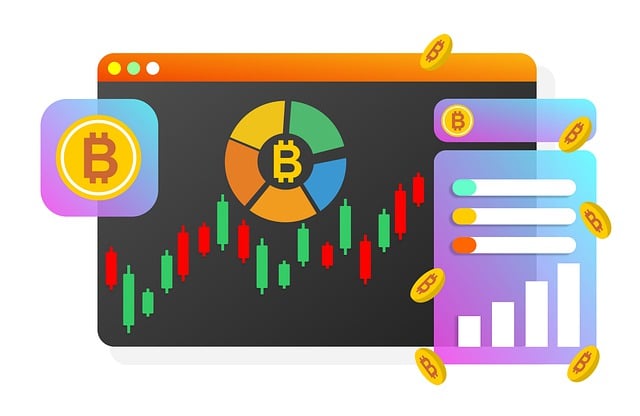Crypto trading bots, powered by social media data analysis, play a significant role in today's volatile cryptocurrency market. They swiftly react to price changes and online sentiment, leveraging machine learning to capitalize on trends. However, their automated nature presents risks in complex markets. Social media influence dramatically impacts crypto prices; a single post can cause rapid fluctuations. Bots integrate Twitter, Reddit, and other platforms' data to anticipate trends, enhancing performance. Developing these bots requires expertise in programming, algorithms, and legal compliance with AML/KYC rules to navigate global jurisdiction issues and mitigate market manipulation risks. Understanding social media's impact is crucial for effective crypto trading strategies.
In the dynamic world of cryptocurrency, understanding the interplay between social media influence and market dynamics is key. This article explores the development of crypto trading bots, focusing on how social media data can be leveraged for strategic advantage. We’ll delve into the impact of social media on crypto price volatility, examine successful bot strategies, and navigate legal considerations to provide a comprehensive guide for developers. By integrating real-world trends, this piece offers valuable insights into the future of automated trading in the cryptocurrency realm.
- Understanding Crypto Trading Bots and Their Role in Market Dynamics
- The Impact of Social Media on Cryptocurrency Volatility
- Integrating Social Media Data into Crypto Trading Bot Strategies
- Building a Crypto Trading Bot: Key Components and Programming Languages
- Case Studies: Successful Social Media-Influenced Crypto Trading Bots
- Legal and Regulatory Considerations in Developing Crypto Trading Bots
Understanding Crypto Trading Bots and Their Role in Market Dynamics

Crypto trading bots are automated software programs designed to execute trades on cryptocurrency exchanges, based on predefined rules and algorithms. These bots play a significant role in market dynamics, particularly with the growing influence of social media on crypto prices. Social media platforms act as powerful tools for disseminating information and shaping public opinion, leading to rapid price fluctuations. Bots can react to these changes almost instantaneously, buying or selling cryptocurrencies based on specific criteria like price movements, volume, or social sentiment.
By analyzing vast amounts of data from social media and other sources, trading bots enable investors to make informed decisions faster. They can identify trends and patterns that might be invisible to human traders, enhancing the potential for profit. However, this automated nature also introduces risks, as bots may struggle with complex market conditions or unexpected events. Therefore, understanding both the capabilities and limitations of crypto trading bots is crucial in navigating the dynamic landscape of digital assets.
The Impact of Social Media on Cryptocurrency Volatility

Social media has a significant impact on cryptocurrency volatility and price movements. With the power of real-time communication, these platforms can create a self-reinforcing cycle where news, rumors, and sentiment can rapidly influence crypto markets. A single tweet or online post from influential figures, such as investors, developers, or even politicians, can spark sudden price fluctuations as followers act on the information shared. This dynamic is particularly evident in highly volatile cryptocurrencies like Bitcoin and Ethereum, where a small shift in public perception can lead to substantial changes in value within minutes.
The social media influence on crypto prices extends beyond individual posts; it also encompasses the broader online conversation surrounding specific projects or tokens. Positive buzz on social media platforms can drive demand and increase token values, while negative sentiment or concerns about regulatory changes can trigger sell-offs. This makes effective social media management crucial for both cryptocurrency projects and traders aiming to minimize risk and maximize gains in a market where information spreads rapidly and emotions run high.
Integrating Social Media Data into Crypto Trading Bot Strategies

Integrating social media data into crypto trading bot strategies has emerged as a powerful approach to gaining an edge in the volatile cryptocurrency market. With the significant influence of social media on shaping public sentiment and driving price movements, developers are increasingly leveraging these platforms for real-time insights. By analyzing trending topics, influencer posts, and market discussions on Twitter, Reddit, or other channels, trading bots can adapt their strategies to capitalize on emerging trends.
Social media provides a direct line to the collective wisdom of investors and enthusiasts, offering valuable signals about potential price fluctuations. For instance, a sudden surge in positive sentiment and hype on social media platforms often precedes significant price increases for specific cryptocurrencies. Integrating this data allows trading bots to make more informed decisions, execute trades at optimal times, and potentially enhance their overall performance.
Building a Crypto Trading Bot: Key Components and Programming Languages

Building a crypto trading bot involves several key components that work in harmony to execute trades autonomously. The first crucial element is a reliable and secure connection to a cryptocurrency exchange API, which enables the bot to access real-time market data and place orders. Programming languages like Python or JavaScript are commonly chosen for their robust libraries and frameworks designed specifically for financial applications. These languages offer easy integration with blockchain technology and facilitate complex algorithmic trading strategies.
Another critical aspect is the development of an advanced algorithm that can analyze market trends, social media influence on crypto prices (a growing area of interest), and other relevant data points to make informed trading decisions. Machine learning techniques and natural language processing (NLP) algorithms play a significant role in this regard, enabling bots to adapt to changing market conditions and identify profitable opportunities. Efficient code optimization is essential for fast execution, ensuring the bot can react swiftly to price fluctuations and maintain a competitive edge.
Case Studies: Successful Social Media-Influenced Crypto Trading Bots

The integration of social media platforms and cryptocurrency trading bots has sparked significant interest in the crypto community, demonstrating the power of online influencers to drive market dynamics. Case studies on successful crypto trading bots that leveraged social media influence showcase how organic conversations and viral trends can translate into substantial price movements. These bots employ sophisticated algorithms to analyze sentiment from popular social media channels, enabling them to make informed trading decisions based on collective public opinion.
For instance, a bot designed to track Twitter conversations around specific cryptocurrencies has consistently outperformed traditional trading strategies. By identifying trending topics and influential voices within the crypto space, this bot can anticipate market shifts, ensuring it executes trades at optimal times. This phenomenon highlights the potential for social media influence to act as a precursor to significant crypto price fluctuations, providing valuable insights for traders seeking an edge in the volatile digital asset market.
Legal and Regulatory Considerations in Developing Crypto Trading Bots

Developing a crypto trading bot involves more than just writing code; it’s crucial to navigate a complex web of legal and regulatory considerations, especially with the dynamic nature of the cryptocurrency market. As the influence of social media on crypto prices grows, understanding these factors becomes even more critical. Regulatory bodies worldwide are actively working to establish guidelines for digital assets, including trading bots, to mitigate risks associated with market manipulation and ensure investor protection. Compliance with regulations like anti-money laundering (AML) and know-your-customer (KYC) rules is essential, as bots can inadvertently facilitate illicit activities if not properly designed and monitored.
Additionally, the decentralized nature of cryptocurrencies presents unique challenges. Developers must consider jurisdictional issues, as different countries have varying legal frameworks for crypto trading. Given the global reach of social media, it’s important to understand how these platforms influence market behavior and ensure that bot strategies account for potential price swings triggered by online conversations and trends. This intersection of technology, finance, and social dynamics demands a careful approach to development, emphasizing not just technical excellence but also legal acumen.
The integration of social media data into crypto trading bot strategies has proven to be a game-changer, highlighting the significant impact of public sentiment and market psychology. As discussed, understanding how social media influences cryptocurrency volatility allows developers to create sophisticated bots capable of adapting to dynamic market conditions. With the right programming languages and key components, these bots can navigate complex algorithms and make informed decisions based on real-time data. The case studies presented demonstrate the success of this approach, showcasing substantial gains in crypto trading. However, it’s crucial to stay informed about legal and regulatory considerations when developing such bots, as the evolving landscape demands ongoing adaptation and compliance.
